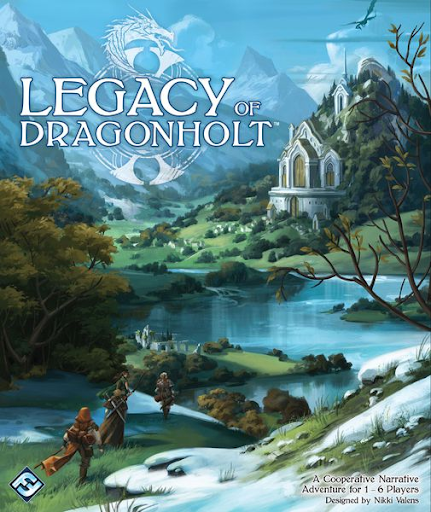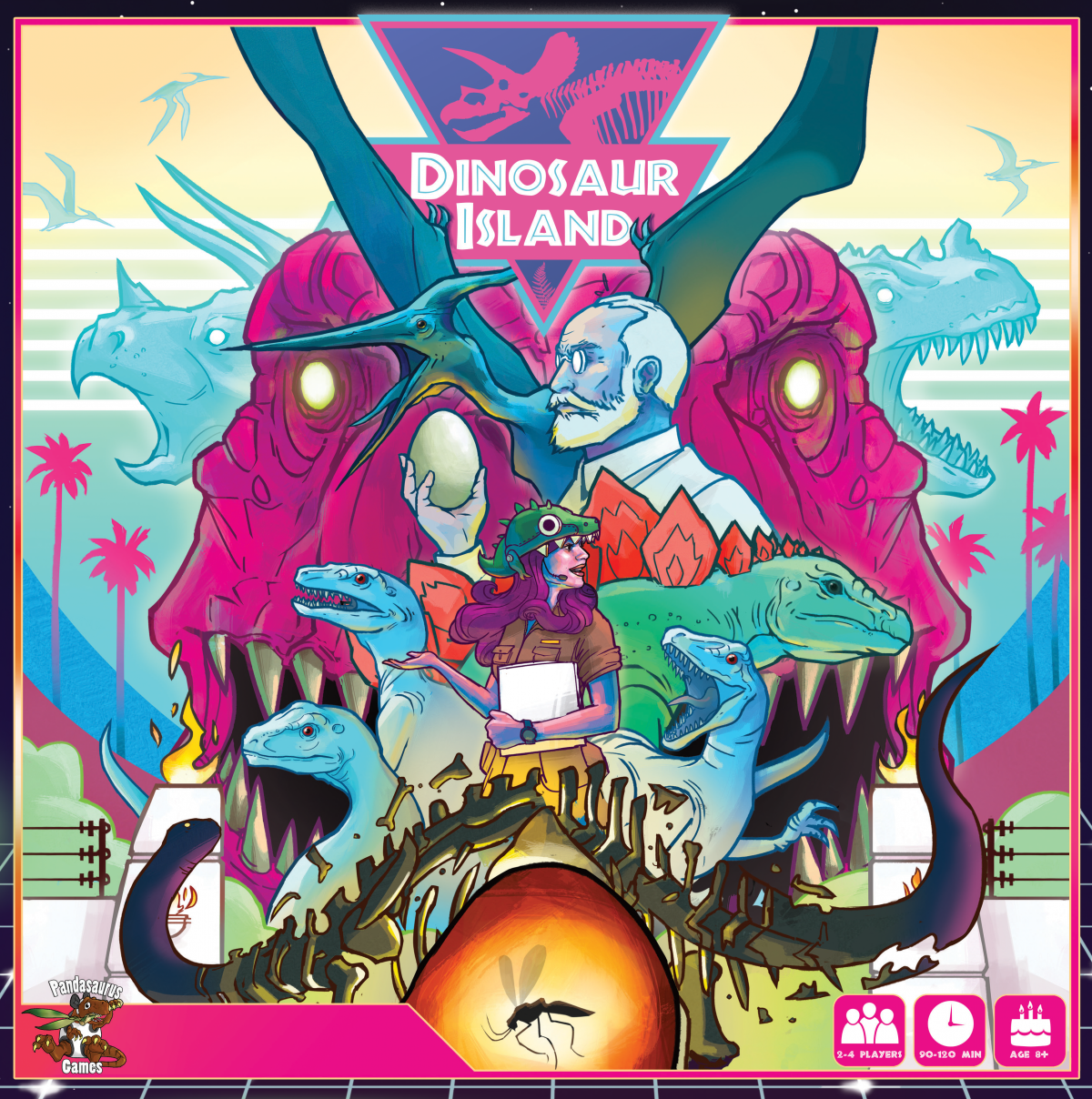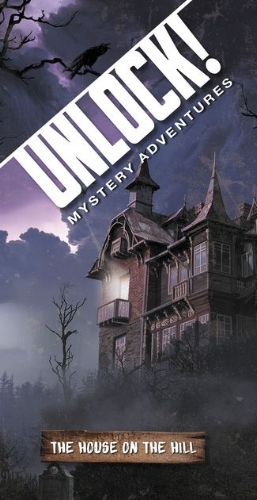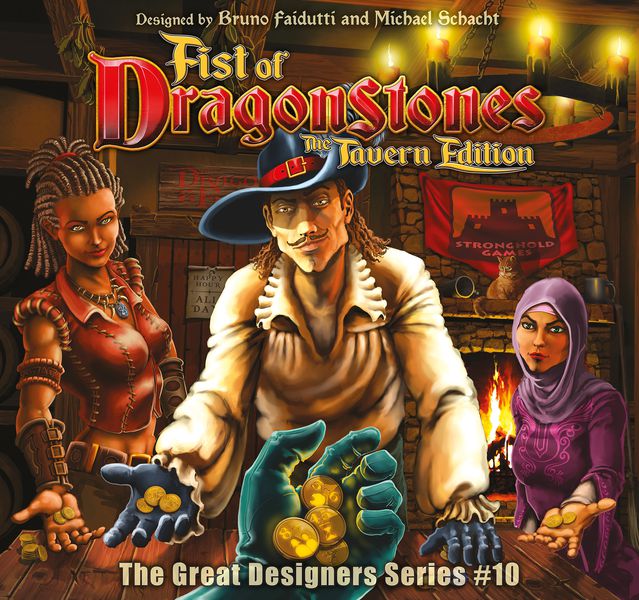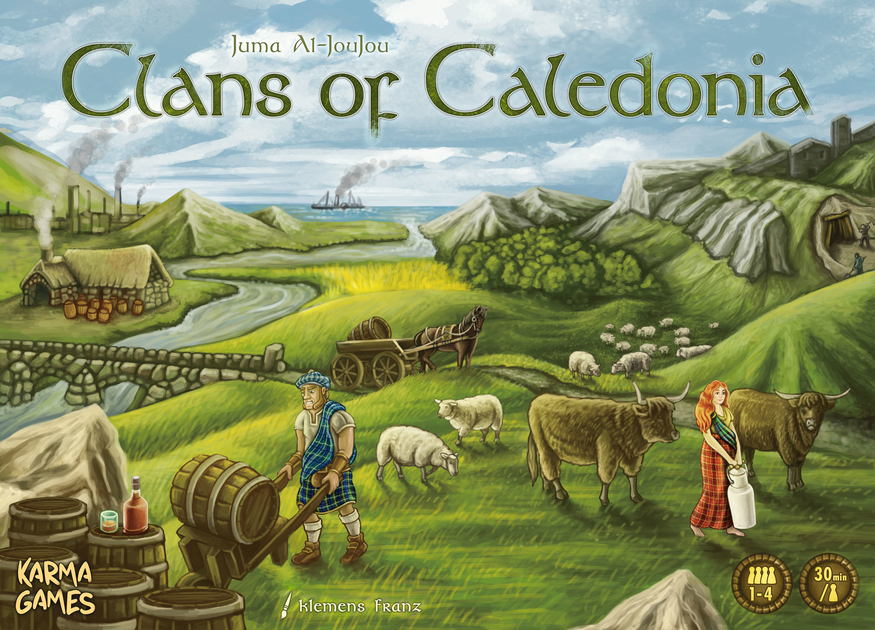The Tale of Ord: Chapters 3 and 4 - Counting on Venison
Designed by Rita Orlov
Artwork by Rita Orlov & Ayodhya Ouditt
Published 2018 by PostCurious
Review by Jack Eddy
*Note* This spoiler free review is a continuation of our Tale of Ord: Chapters 1 and 2 review that you can find here. If you are completely lost as to what this is, you might want to check out that review first.
Given our incredible experience with Tale of Ord chapters 1 & 2, we thought ourselves veteran sleuths ready for whatever PostCurious could sling our way; expecting the unexpected and confident that now that we had the hang of it, finishing the remaining chapters would be a breeze! After all, it’s probably just more of the same. Right?
We were so wrong...
The Game is Afoot (Gameplay)
Inside the now-familiar sleek black box, the conclusive chapters of this narrative puzzle adventure lie in wait. We took some time off from chapters 1 & 2, largely because, well, life can get in the way of continuity, but also because we wanted to savor the experience. It’s no joke that solving the first two chapters was among Christina and I’s all-time favorite gaming experiences. When we finally decided to break into it, the objects within were stranger, the visuals were more esoteric, and the writing was more cryptic than ever.
Chapter 3 continues to defy your expectations with gusto by demanding that you unshackle your brain and begin interacting with physical objects more in the way that you approach building a lego set with no instructions; if you haven’t bent, broken, torn, disassembled, and written on three quarters of the components by it’s completion, you did something wrong.
Finally, after two long nights of scrutinizing every last detail like a content starved Song of Ice & Fire Fan searching for clues, we cracked the case and found our way through chapter 3. This was by far the most mentally exhausting of the chapters; thrilling, yes, but you will feel like you need some sleep after making it through a session. Except you won’t, because you’ll be so busy talking about what could possibly happen in the supersized chapter 4 envelope, given everything you’ve seen.
Chapter 4 is… well, it’s exactly what you want it to be. You know how in the best stories (and math classes) the final challenge is a summary of everything the hero has been learning up until that point, except cranked to 11? That’s what you’re looking at here. The challenges in chapter 4 are a robust, wholistic summary and progression of the whole adventure so far, that will have you recontextualizing and employing clues from each chapter before it. And that’s not even talking about why the envelope is so big.
Suffice it to say, when we read the letter attached to chapter 4, Christina and I both said “No…” in disbelief. “Surely they don’t mean...”. And yeah, they did. I’m not going to spoil it, but the main obstacle, the ultimate finale of the game, is one of the most incredible, intricate, and mind-blowing components that has come across my table, and all the myriad of supporting documents in chapter 4 relate to it.
Chapter 4 also took two sessions, both because of the mental taxation, but also due to us being old fuddy-duddies who have a toddler, jobs, responsibilities, and too-often-ignored bedtimes. That said completing chapter 4 was as satisfying of a narrative and tabletop gaming experience as I’ve ever had, immediately causing us to video call people and gush wildly while desperately trying not to spoil a single detail. If chapters 1 and 2 made a promise, 3 and 4 delivered.
One thing that particularly struck me about these latter two chapters is the breadth of disciplines involved in creating the puzzles, while not really reliant on the players knowledge of those disciplines to solve them. This lent itself well to group dynamics, where people naturally good at spatial arrangement, math, linguistics, or research could best employ their skills, but the logic is never so prohibitively difficult that you'd fail if your team lacked an accountant or philologist. These are STEM activities for adults.
That said...
Facing the Jabberwocky (Difficulty)
“it seems to fill my head with ideas–only I don’t exactly know what they are!” - Alice, Through the Looking Glass
In our initial review, I encouraged players to avoid becoming lost in the woods by making liberal use of the awesome hint system on PostCurious’ website. Now that we’ve managed our way through the latter half, I’m begging you.
While we clearly loved our time with the game, chapters 3 and 4 were notably harder, and one of my biggest criticisms of the overall experience is it didn’t feel like a natural progression of difficulty when we got to the latter half. In these final four sessions, we more often found ourselves teetering further from the realm of exciting mystery into opaque befuddlement. Fortunately, with rest, perspective, and a heavy dosage of clues, we were always able to steer ourselves back on course, but there were more than a couple times where a clue made me go “There is never in a million years that I would have thought of that!”
And like I said earlier, it’s not because of a lack of knowledge or skill when it comes to analyzing text or knowledge of Norse Mythology; our greatest challenge was often (and still) due to us underestimating the parameters of the game, not employing real world logic and assuming everything is textual information available on paper. The key to solving one particular puzzle was a simple as matching symbols and seeing what the cuts revealed but in spite of solving seemingly far more complex things, the disparity between the objects involved threw us off. Ultimately, it was a minor logical jump that seems so intuitive in retrospect, but without the hints, who knows if we’d ever get there.
Which can be frustrating, you know? I’m a gamer! I want seamless progression that relies on my wits and cunning; taking hints can feel like I’m cheapening the experience!
But it didn’t. Yes, I wish the puzzles nudged you just a little bit more toward the goals without having to rely on a clue system online, but those “never in a million year moments” were accompanied by a healthy dose of bewilderment at just how clever and nuanced the puzzles were, and for each puzzle that really busted our brain and we needed a ton of help, there were several more that a polite nudge was enough to send us along our path of triumph.
Evidence & Artifacts (Materials)
Straight up, The Tale of Ord is remarkably tight. Whether it’s indicative of mad genuis, black magic, or the combination there-of, it’s astounding at how cohesive the overall experience is. Characters have consistent voices, references are well researched, information is presented in tantalizing ways, and the solutions and resulting narrative developments are wilder and wilder with each puzzle you solve.
More than anything, I appreciate the layering and nuance throughout. Narrative themes are recalled, characters have arcs, puzzles are reliant upon clues within earlier chapters, and your skill at understanding both the sheer mechanics and narrative complexities grows, which deepens the game and really makes the story resonate.
And the quality of materials doesn’t end with the writing, chapters 3 and 4 include a couple physical objects that blew us away. These totems of bewilderment fit so cohesively in the narrative that it gave the experience a real world feeling unlike anything we had done to that point. Describing them further would spoil the fun, so all I’ll say is that they are functional, beautiful, and intricate in ways that showcase the enormous skill, craft, and creativity that went into designing the Tale of Ord.
Honestly, I still can’t believe what was included in that final package.
Disparate Elements (Odds and Ends)
Look, I still think The Tale of Ord’s biggest hurdle is sticker shock. $165 is a big ask for most people, and the masses aren’t used to the idea of spending $165 on a physical product meant to be played once. But for 7 total sessions, 2 or more hours a piece, we managed to have some of the most riveting, memorable, and immersive gaming experiences we’ve ever had, that (much to the annoyance of parents/coworkers/cats/strangers on the street), we cannot stop talking about.
That said, if you are still wanting to know more about what you’d be getting into before throwing down, you can request a free postcard from the publisher that will be a sort of prelude puzzle unto itself.
Another thing to mention is that the experience has shifted slightly, in that the publisher is now sending either 4 monthly packages or all 4 chapters in one shipment (exclusively the latter for international audiences), rather than two at a time as they’ve done until now. Not a huge shift, but my recommendation is that you not binge it. Savor the breaks in between, allow the mystery to percolate and let the suspense build. After all, the narrative tension is what makes the payoff to the puzzles so much more magnificent.
A very late night snapshot commemorating our victory with a particularly mysterious souvenir.
Ragnarok (Final Thoughts)
The Tale of Ord is so much more than I imagined it could be. I mean, yeah, the game could be summarized as an excellent narrative mystery full of cryptic puzzles to solve, sounds cool, right? That’s how I labeled it going in, but I found that once I got going, I really had no idea what I was in for.
By the time we were done, our notebook was full of translated runes, numerology, symbology, astrology, astronomy, and so many deer. Yeah, if you weren’t counting on venison going into this thing, you have another thing coming.
Really, it’s the connective tissue binding each chapter that impressed me the most; The Tale of Ord is a nuanced, layered mystery that challenges and empowers players with all the tools to succeed. While I wish that the progression of difficulty were a bit more seamless from chapter to chapter, the level of skill and creativity necessary balance such a complex intersection of fantastic narrative, challenging and clever puzzles, and bespoke materials makes it easy to look past the occasional brain-numbing difficulty; and the sense of triumph at its completion was sweeter than any win I’ve ever had at a table.
If you have a heart for adventure and a mind for mystery, or you love great stories and want to rethink what gaming can be, The Cardboard Herald heartily recommends The Tale of Ord.
*A review copy a the Tale of Ord was provided by PostCurious. You can learn more about PostCurious and the designer, Rita Orlov on their site https://www.getpostcurious.com.
The Cardboard Herald is funded by the generous support of readers, listeners, and viewers. If you'd like to help support, you can find our Patreon here.
Other Recent Written Reviews:













